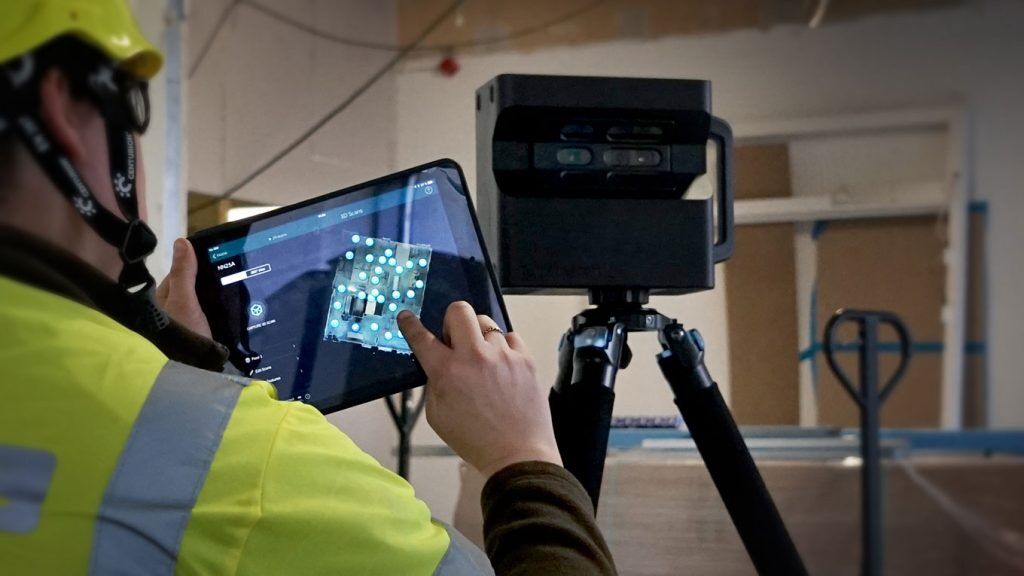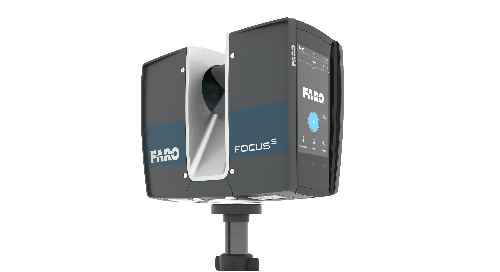Why 3D Scanning Supports With Accurate Measurements
Wiki Article
The Future of Accuracy Measurement: Comprehending the Duty of 3D Laser Scanning Technology
The landscape of precision measurement is advancing with the advent of 3D laser scanning modern technology. This innovation promises boosted accuracy and performance throughout numerous sectors. As markets start to accept these advancements, the effects for task administration and execution become significantly considerable. The transformative results of this technology prolong beyond simple numbers and dimensions, hinting at a wider change in exactly how professionals approach their work. What might this imply for the future?What Is 3D Laser Scanning Technology?
3D laser scanning technology is an advanced approach made use of to record precise three-dimensional measurements of physical items and atmospheres. This modern technology uses laser beams to collect information points, which are after that refined to develop comprehensive digital representations of the scanned subjects. By producing countless laser pulses per second, 3D laser scanners can properly record the form, dimension, and spatial connections of various surface areas.The procedure usually includes positioning the scanner at various viewpoint to capture substantial data. The resulting point cloud, a collection of countless information points, can be assessed and exchanged 3D models. Applications of this modern technology span several areas, including style, design, and heritage preservation, where it aids in paperwork and analysis. As a non-intrusive approach, 3D laser scanning minimizes interruption to the environment, enabling extensive assessments of both existing structures and natural landscapes, therefore boosting understanding and facilitating informed decision-making.
Trick Advantages of 3D Laser Scanning in Different Industries
3D laser scanning technology offers substantial advantages across various industries by supplying improved accuracy and precision in dimensions. This innovation not only simplifies workflows yet likewise results in substantial time and expense financial savings. As organizations significantly adopt this cutting-edge approach, the advantages come to be apparent in enhanced job outcomes and performances.Enhanced Accuracy and Precision
The integration of laser scanning modern technology has reinvented the way markets come close to dimension and information collection. This modern technology supplies an unmatched degree of accuracy, capturing countless information points in a solitary check. Therefore, specialists across numerous fields, such as architecture, design, and manufacturing, can produce highly outlined 3D models that show real-world problems. Boosted precision minimizes errors linked with standard measurement approaches, guaranteeing that designs and constructions are based on exact information. Furthermore, the capacity to capture detailed information permits much better analysis and decision-making, eventually leading to improved results. By leveraging 3D laser scanning, sectors can attain greater standards of quality, making it an invaluable tool for accurate dimensions.Time and Expense Performance
Efficiency in time and cost is a substantial advantage supplied by laser scanning modern technology, changing task execution across various industries. By rapidly recording thorough 3D information, laser scanning minimizes the moment invested in hand-operated measurements and reduces the threat of errors. This quick information procurement assists in much faster decision-making and project timelines, enabling teams to assign resources a lot more effectively. Additionally, the modern technology decreases the need for rework, as accurate designs result in better planning and execution. Industries such as building and construction, design, and producing benefit significantly, seeing lower prices connected to labor and products. Overall, 3D laser scanning not only enhances functional efficiency but likewise contributes to substantial savings, making it a vital device in today's competitive landscape.Applications of 3D Laser Scanning in Design and Building
As architectural and construction jobs expand increasingly intricate, the fostering of laser scanning modern technology has emerged as a transformative option. This modern technology supplies accurate measurements and in-depth 3D depictions of existing frameworks, helping with more exact planning and design processes. Designers make use of 3D laser scanning to create electronic designs that record detailed information, ensuring that remodellings and new constructions straighten perfectly with existing problems.

The Function of 3D Laser Scanning in Production Processes
3D laser scanning plays a necessary duty in manufacturing processes by improving quality assurance through precise dimensions and information collection. This technology enables producers to determine disparities early, reducing mistakes and waste. In addition, it streamlines manufacturing operations by facilitating far better interaction and control amongst groups.Improved High Quality Control
Quality assurance in producing processes has actually been changed by the combination of laser scanning modern technology. This ingenious strategy allows for specific measurements and comprehensive inspections of components, guaranteeing that they meet rigid top quality criteria. click here for info 3D laser scanning captures intricate geometries and resistances, allowing makers to detect deviations from design specs promptly. This modern technology substantially lowers human error connected with typical measurement approaches, giving consistent and trustworthy data. By assisting in real-time quality control, it makes it possible for aggressive adjustments in the manufacturing procedure, eventually resulting in enhanced product integrity and consumer fulfillment. As sectors increasingly adopt 3D laser scanning, the possibility for enhanced quality assurance ends up being apparent, marking a transformative change in making methods.Structured Manufacturing Process
Reliable production operations are increasingly gaining from the assimilation of laser scanning innovation in making procedures. This innovation enables quick, precise dimensions of assemblies and elements, significantly lowering the time required for setup and adjustments. By recording exact geometry, manufacturers can promptly determine discrepancies in between style requirements and actual products, enabling immediate rehabilitative actions. Additionally, 3D laser scanning assists in the seamless transfer of information between design and manufacturing groups, improving cooperation and lowering errors. The modern technology additionally sustains digital double production, enabling real-time tracking and optimization of manufacturing processes. As an outcome, companies can attain greater efficiency, reduced waste, and enhanced overall performance, inevitably driving affordable advantage in the marketplace.Protecting Heritage: Exactly How 3D Laser Scanning Aids Cultural Preservation
As social heritage sites deal with the threat of damage and damage, ingenious innovations such as laser scanning emerge as crucial devices for preservation efforts. 3D laser scanning records intricate details of historic structures and artefacts with exceptional precision, developing electronic versions that offer numerous purposes in conservation. These designs enable precise documentation of current problems, allowing specialists to keep track of adjustments in time and examine degeneration threats.In addition, laser scanning facilitates digital restoration, aiding conservators establish prepare for repair work or recreating lost elements without intrusive techniques. The modern technology also assists in enlightening the general public, using immersive experiences through virtual trips that highlight the relevance of these sites. By incorporating 3D laser scanning into cultural conservation practices, stakeholders can guarantee that heritage is preserved for future generations while improving understanding and appreciation of historic contexts.
The Future Expectation: Developments and Fads in 3D Laser Scanning Technology
3D laser scanning modern technology has actually currently changed various industries, its future pledges also better improvements that will certainly boost accuracy, access, and speed. Emerging patterns show an increase in combination with artificial intelligence and artificial intelligence, causing smarter data processing and evaluation capacities. This synergy will make it possible for quicker decision-making and even more accurate end results in fields such as design, heritage, and building and construction preservation.Advancements in hardware are expected to yield lighter, more portable scanning devices, equalizing accessibility for smaller companies and private experts. As software application remains to evolve, straightforward applications will simplify complex workflows, making 3D scanning more available to non-experts
The rise of cloud-based solutions will certainly assist in real-time partnership and data sharing among stakeholders, leading the method for streamlined task monitoring. Collectively, these trends signify a future where 3D laser scanning modern technology ends up being a necessary tool in an even more comprehensive you could look here spectrum of applications.
Regularly Asked Concerns
Exactly How Much Does 3D Laser Scanning Innovation Price?

What Are the Abilities Called For to Run 3D Laser Scanners?
Running 3D laser scanners calls for technological proficiency, attention to detail, spatial awareness, knowledge of software for data processing, and an understanding of surveying principles. Additionally, strong analytical abilities and analytical skills are vital for efficient operation.Can 3D Laser Scanning Integrate With Other Technologies?
Yes, 3D laser scanning can integrate effortlessly with various other technologies, such as Geographic Information Equipment (GIS), Structure Information Modeling (BIM), and boosted truth, enhancing data accuracy and assisting in improved analysis across various sectors and applications. - 3D ScanningWhat Is the Regular Scanning Series Of These Tools?
The typical scanning variety of 3D laser scanning tools varies widely, usually in between 50 meters to over 1,000 meters, depending upon the design and application, affecting their viability for various precision measurement jobs and atmospheres.For how long Does a 3D Laser Scanning Task Take?
A 3D laser scanning project typically takes anywhere from a few hours to several days, depending upon elements such as task dimension, intricacy, and required information. Each task's timeline can differ considerably based upon these elements.The landscape of precision dimension is developing with the arrival of 3D laser scanning modern technology. 3D laser scanning innovation is an innovative technique made use of to catch specific three-dimensional measurements of physical objects and settings. 3D laser scanning technology uses significant advantages across numerous industries by providing improved precision and precision in measurements. 3D laser scanning technology has currently changed various industries, its future pledges also better improvements that will certainly enhance rate, access, and precision. 3D laser scanning innovation normally costs in between $10,000 and $100,000, depending on go the tools's abilities and functions.
Report this wiki page